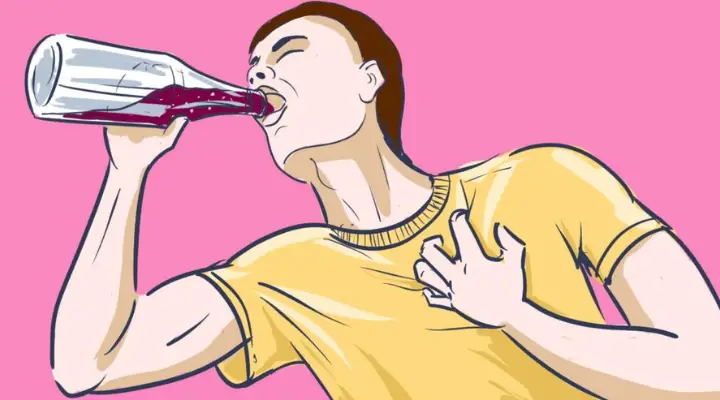As pet owners, we deeply cherish our furry companions, and their health is our top priority. Recognizing the early warning signs of cancer in dogs is crucial in ensuring timely intervention and treatment. Cancer in dogs can manifest in various ways, and understanding these signs can make a significant difference in your dog’s life. In this comprehensive article, we will delve into the seven early warning signs of cancer in dogs, helping you stay vigilant and proactive in maintaining your pet’s health.
1. Unusual Lumps and Bumps
One of the most common early signs of cancer in dogs is the presence of unusual lumps and bumps. While not all lumps are cancerous, any new or changing growths should be examined by a veterinarian. Regularly running your hands over your dog’s body during grooming sessions can help you detect any abnormalities early.
Key Points to Consider:
- Size and Shape: Note any changes in the size, shape, or texture of lumps. Rapid growth or irregular shapes warrant immediate attention.
- Location: Be aware of where lumps are found. Some areas may be more prone to benign growths, while others might be more concerning.
- Pain and Sensitivity: Lumps that cause your dog pain or discomfort when touched should be checked by a vet without delay.
2. Unexplained Weight Loss
Sudden or unexplained weight loss is a significant red flag for potential health issues, including cancer. If your dog is losing weight despite maintaining a healthy diet and exercise routine, it could indicate an underlying problem.
Key Points to Consider:
- Appetite Changes: Monitor your dog’s eating habits. A decrease in appetite or difficulty eating can be a symptom of oral tumors or gastrointestinal cancers.
- Muscle Wasting: Noticeable muscle loss, particularly around the hindquarters, can be indicative of systemic illness.
- Energy Levels: A dog with cancer may exhibit decreased energy levels and lethargy, which can accompany weight loss.
3. Persistent Coughing or Difficulty Breathing
Persistent coughing or difficulty breathing can be a sign of lung cancer or other respiratory issues. While occasional coughing can be due to benign causes like allergies or infections, chronic coughing requires veterinary evaluation.
Key Points to Consider:
- Cough Characteristics: Pay attention to the nature of the cough. A dry, hacking cough can be different from a moist, productive one.
- Breathing Patterns: Observe your dog’s breathing. Labored or rapid breathing, wheezing, or shortness of breath are concerning signs.
- Associated Symptoms: Look for other symptoms like nasal discharge, sneezing, or coughing up blood, which may indicate more severe issues.
4. Non-Healing Wounds or Sores
Non-healing wounds or sores that persist for more than a few weeks can be an indicator of skin cancer or other malignancies. Healthy dogs typically heal quickly, so prolonged healing times are a cause for concern.
Key Points to Consider:
- Appearance: Inspect the wound’s appearance. Changes in color, texture, or size of a sore can signal malignancy.
- Pain and Discomfort: A wound that causes your dog pain, irritation, or excessive licking requires prompt veterinary attention.
- Location: Sores located on areas like the mouth, nose, or paws can be particularly indicative of cancerous growths.
5. Difficulty Eating or Swallowing
Difficulty eating or swallowing can point to cancers in the mouth, throat, or esophagus. If your dog is experiencing pain while eating, drooling excessively, or has visible growths in the mouth, it’s essential to seek veterinary care.
Key Points to Consider:
- Oral Examination: Regularly check your dog’s mouth for unusual growths, sores, or changes in gum color.
- Drooling and Bad Breath: Excessive drooling, foul breath, or blood-tinged saliva can be signs of oral cancer.
- Feeding Behavior: Watch for changes in how your dog eats, such as favoring one side of the mouth, dropping food, or avoiding hard kibble.
6. Changes in Bathroom Habits
Changes in bathroom habits, including both urination and defecation, can be early indicators of cancer affecting the urinary tract, digestive system, or reproductive organs.
Key Points to Consider:
- Frequency and Urgency: Increased frequency, straining, or urgency in urination can signal bladder cancer or other urinary issues.
- Stool Appearance: Monitor changes in stool consistency, color, and presence of blood. Diarrhea or constipation can be symptoms of gastrointestinal cancer.
- Behavioral Changes: Pay attention to signs of discomfort during elimination, such as whimpering or changes in posture.
7. Behavioral Changes and Lethargy
Behavioral changes and lethargy can be subtle but significant indicators of underlying health problems, including cancer. A normally active and playful dog that becomes withdrawn or lethargic may be experiencing pain or discomfort.
Key Points to Consider:
- Activity Levels: Note any decline in your dog’s interest in play, walks, or interaction with family members.
- Mood and Temperament: Changes in mood, such as increased irritability, aggression, or anxiety, can be signs of distress.
- Sleep Patterns: Alterations in sleep patterns, such as excessive sleeping or restlessness, should not be overlooked.
Conclusion
Being aware of these early warning signs of cancer in dogs can help you take swift action and seek veterinary care when needed. Regular check-ups, a balanced diet, and a keen observation of your pet’s behavior and physical condition are essential in maintaining their health and well-being. Early detection and intervention can make a significant difference in the treatment and prognosis of canine cancer.







